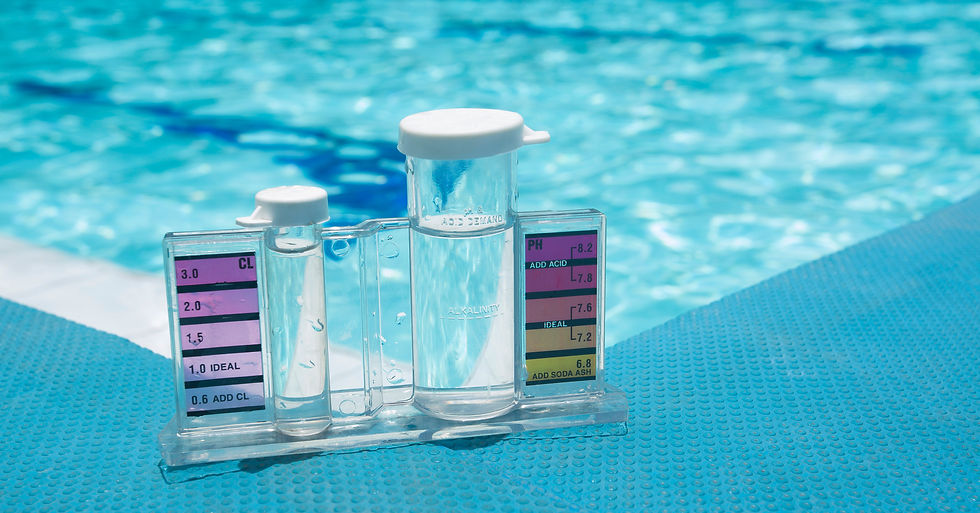Potassium Hydroxide (KOH) Caustic Potash
- Sylvia Rose

- Oct 13, 2024
- 4 min read
Updated: Oct 14, 2024
Potassium Hydroxide, also known as caustic potash, has a history dating back to ancient times. A versatile chemical compound, it's used in various industries. It's been compared to lye (caustic soda) as both are highly corrosive.

History & Ancient Uses
In early times, it's employed in the manufacture of soap and glass. The ancient Egyptians use potassium hydroxide as one of countless elements for mummifications. Early methods of extracting potash involve leaching the ashes of burnt hardwoods, rich in potassium salts.
The ashes, primarily consisting of potassium carbonate (K2CO3), are dissolved in water to create a crude form of potash. It's also used as a food preservative.
In the Middle Ages, potash is an important commodity, especially in Europe, as a crucial ingredient in the production of fertilizers and cleaning products. As the industrial revolutions happen, demand for refined forms of potash rise.

Formation in Nature
In nature, KOH is formed through the interaction of potassium carbonate with water and carbon dioxide. It can also be found in various minerals, such as sylvite and carnallite.
Potassium hydroxide naturally occurs through weathering of minerals such as feldspar, mica and other potassium-rich rocks. These minerals, when exposed to water and acid conditions over long periods, release soluble potassium compounds into the environment.

How to Make Caustic Potash
Producing potassium hydroxide can be done a few ways:
Electrolysis of Potassium Chloride (KCl): This method involves dissolving potassium chloride in water and passing an electric current through the solution, which results in the formation of KOH at the cathode.
Hydrolysis of Potassium Carbonate (K2CO3): By treating potassium carbonate with calcium hydroxide (slaked lime) and heat, you can produce potassium hydroxide and calcium carbonate.
Hydration of Potassium Oxide (K2O): Directly combining potassium oxide with water can yield potassium hydroxide.
Regardless of the method, safety precautions must be taken.

Properties of Potassium Hydroxide
Potassium Hydroxide is a white, odorless solid, highly corrosive and soluble in water. It has strong alkaline properties, making it a potent base in chemical reactions. Potassium hydroxide is hygroscopic, meaning it readily absorbs moisture from the air.
Notable properties include:
Chemical Formula: KOH
Molar Mass: 56.11 g/mol
Melting Point: 360 °C (680 °F)
Solubility: Highly soluble in water, generating a significant amount of heat in the process.
pH: When dissolved in water, KOH creates a strongly alkaline solution (pH 13-14).

Chemical Reactions
Potassium Hydroxide is active in various chemical reactions, including neutralization reactions with acids to form salts and water. Additionally, it reacts exothermically with water, releasing heat and generating potassium hydroxide solution.
Neutralization Reactions: KOH reacts with acids to form salts and water. For example: [ KOH + HCl → KCl + H_2O ]
Formation of Potassium Salts: It is used to produce potassium salts, such as potassium carbonate (K2CO3) and potassium phosphate (K3PO4).
Saponification: As a strong base, KOH is used in the saponification process to produce soft soaps from triglycerides.

Uses of Potassium Hydroxide Today
Potassium hydroxide's unique properties make it indispensable in various applications today:
Agriculture: It is used as a fertilizer to provide potassium, an essential nutrient for plant growth.
Food Industry: KOH is utilized in food processing, such as in the manufacturing of olives and lye processing of various foods.
Soap and Detergent Production: Soft soap, which is potassium-based, is synthesized from KOH.
Industrial Cleaning Agents: Due to its caustic nature, KOH is used in cleaning products for both commercial and domestic purposes.
Batteries: KOH is a critical component in the production of alkaline batteries.
Chemical Synthesis: It acts as a catalyst or reagent in various chemical laboratory processes.

Facts about Caustic Potash
Safety: KOH is highly corrosive and can cause severe burns on contact with skin or eyes. It should always be handled with appropriate safety gear.
Environmental Impact: While useful, KOH can pose a risk to aquatic life if introduced into waterways in high concentrations.
Market Demand: Caustic potash continues to see demand growth, especially in the sustainable agriculture sector, where potassium is critical for crop production.
Caustic Potash is used in the food industry for processing cocoa, chocolate, and coffee.
Vital ingredient in pharmaceuticals, functioning in the synthesis of various medications.
Potassium Hydroxide is a key component in the production of biodiesel with relevance in renewable energy sectors.

Non-Fiction Books:
Fiction Books:
READ: Lora Ley Adventures - Germanic Mythology Fiction Series
READ: Reiker For Hire - Victorian Detective Murder Mysteries


